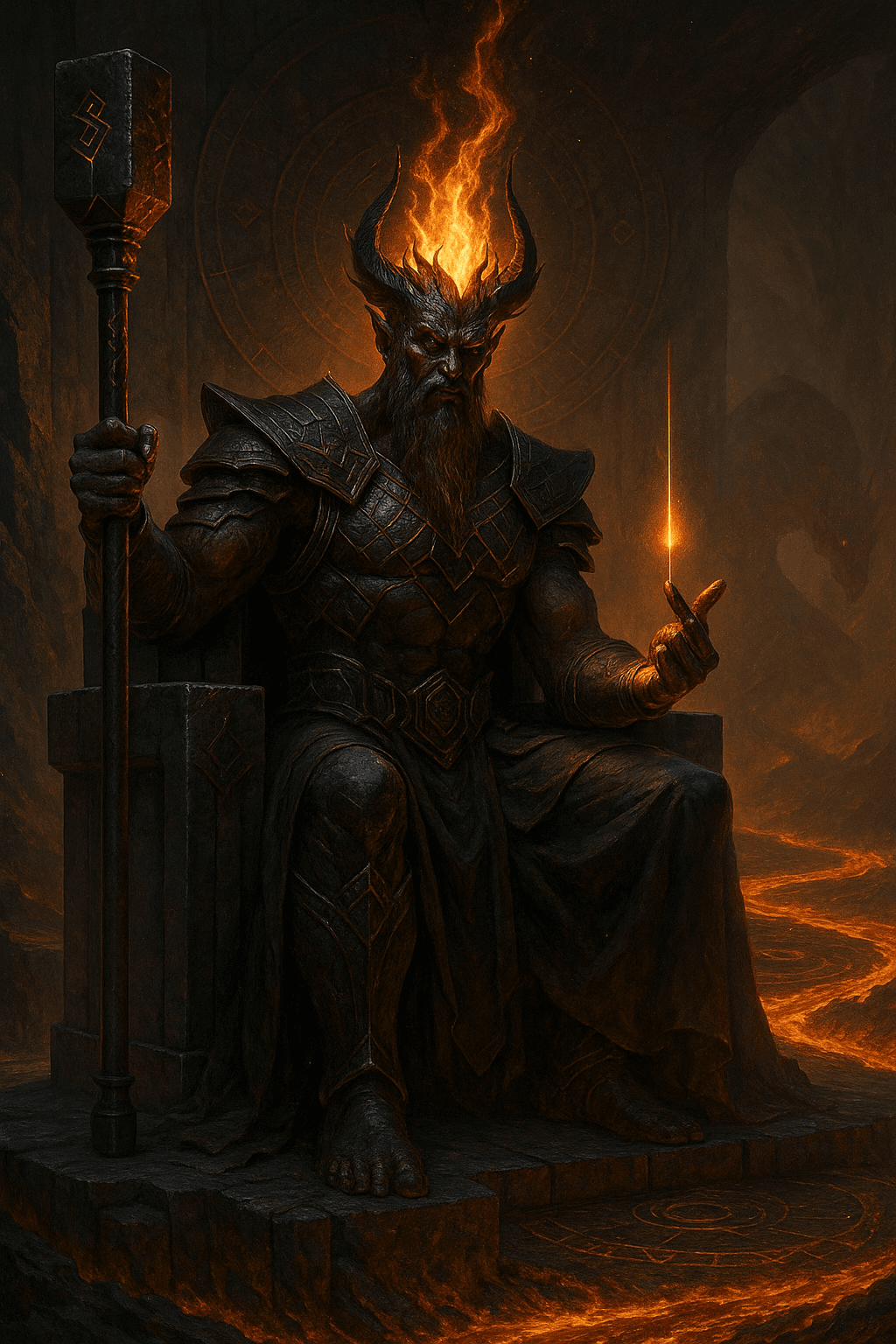Pyre Lord
The old flame bows to none.

Some fires roar because they are new. Others burn because they remember. The Pyre Lord is the second kind—a towering Ember Djinn whose heat carries the taste of iron and old vows, whose every gesture seems to pull the air into orderly combustion. In Thar Zûl’s ash-lit dominion he is both relic and threat, a figure cut from obsidian certainty who holds that flame should answer only to those born of it. Where zealots howl and mortals preach, he simply stands, and the forges quiet to listen.
Echoes.
The Embercore’s discovery split the Choir of Ember into sparks and embers—those who would ride the artifact’s wild surges like a storm, and those who would master it through rite and memory. The Ashen Disciple champions the first path, baptizing crowds in heat that buckles stone and calling it destiny. The Pyre Lord answers with ritual, reminding the Choir that ungoverned fire is not a god but an accident.
He convenes councils in the Ashen Forge’s inner halls, beneath basalt arches blackened glass-smooth by centuries of controlled burn. Ash-priests who remember the old chants kneel in rows; foundry cantors stamp measured rhythms that keep the heat from wandering. He speaks little. Instead, he sets a clay brazier on the floor and pinches its flame narrower and narrower until it stands like a needle—silent, precise. “This,” he tells them at last, “is power. Not the avalanche of sparks, but the line that cuts.”
The Pyre Lord’s command is measured rather than spectacular. War-captains loyal to the old guard find their barracks stocked, their drakes properly harnessed and soothed with ember-songs that temper frenzy into accuracy. Magma-Drakes answer his calls with low, volcanic chords; Ashwings bank when his hand lifts; even the forge-fires respect the invisible boundaries he draws with a single sweeping finger. He revives ceremonies thought lost—the Ember Litanies of conquering heat, the guttered-oath that binds flame to purpose—using them to cast net after net across the Choir’s politics.
He judges the Embercore not unworthy, but unready. “An unripened heart,” he calls it, one that can be eaten raw only by those eager to die convinced. While the Disciple drives experiments that tear seams in the crust, the Pyre Lord digs downward through law and precedent, reclaiming the Ash Vaults and populating them with quiet loyalists—keepers of ledgers, branders of oaths, smiths who know which alloys sing and which scream. Refugees scorched by failed Embercore rites find food and shade in his precincts; they leave wearing obsidian oath-glyphs that glint like cooled lightning.
His patience has teeth. Far below the Ashen Forge, where the caldera grinds and the world’s heat talks to itself, he keeps a secret: Kindlefang, a Cindermaw whose molten plates pulse with that same Embercore cadence. Not yet a mount, not yet a weapon, Kindlefang is a promise. The Pyre Lord feeds it names and measured offerings, threading control into hunger until the beast’s surges match his slow, implacable breathing. When the Choir’s schism crests—when ash-rallies threaten to topple every discipline he guards—he will open the vault and step forward with a chain of runes, not to boast but to end an argument.
Enemies name him arrogant; he would say accurate. He suffers no mortal in front of the flame unless they’ve bled for the words that bind it. Ash-Priestess Vhalra’s devotions he calls admirable but misplaced; the Ashen Disciple’s spectacle he calls a bonfire in a library. Yet he is not blind to utility. Scouts whisper that messengers from shadowed wetlands have crossed the obsidian bridges and departed unburned. The Pyre Lord values information the way he values heat—contained, directed, capable of welding what must be one and severing what must be apart.
If conquest returns to Thar Zûl, it will come in lines instead of waves—campaigns written like diagrams, each arc of flame constrained by song. The Pyre Lord does not hunger for applause or prophecy. He wants a world in which fire remains itself and those who tend it remember how to kneel before craft. Should he topple the Ashen Disciple, he will not announce a new age; he will relight the old lamps and insist that everyone watch how the wick is trimmed.
To stand in his presence is to feel a furnace brought to heel. To oppose him is to learn how sharp a straight line of flame can be.
